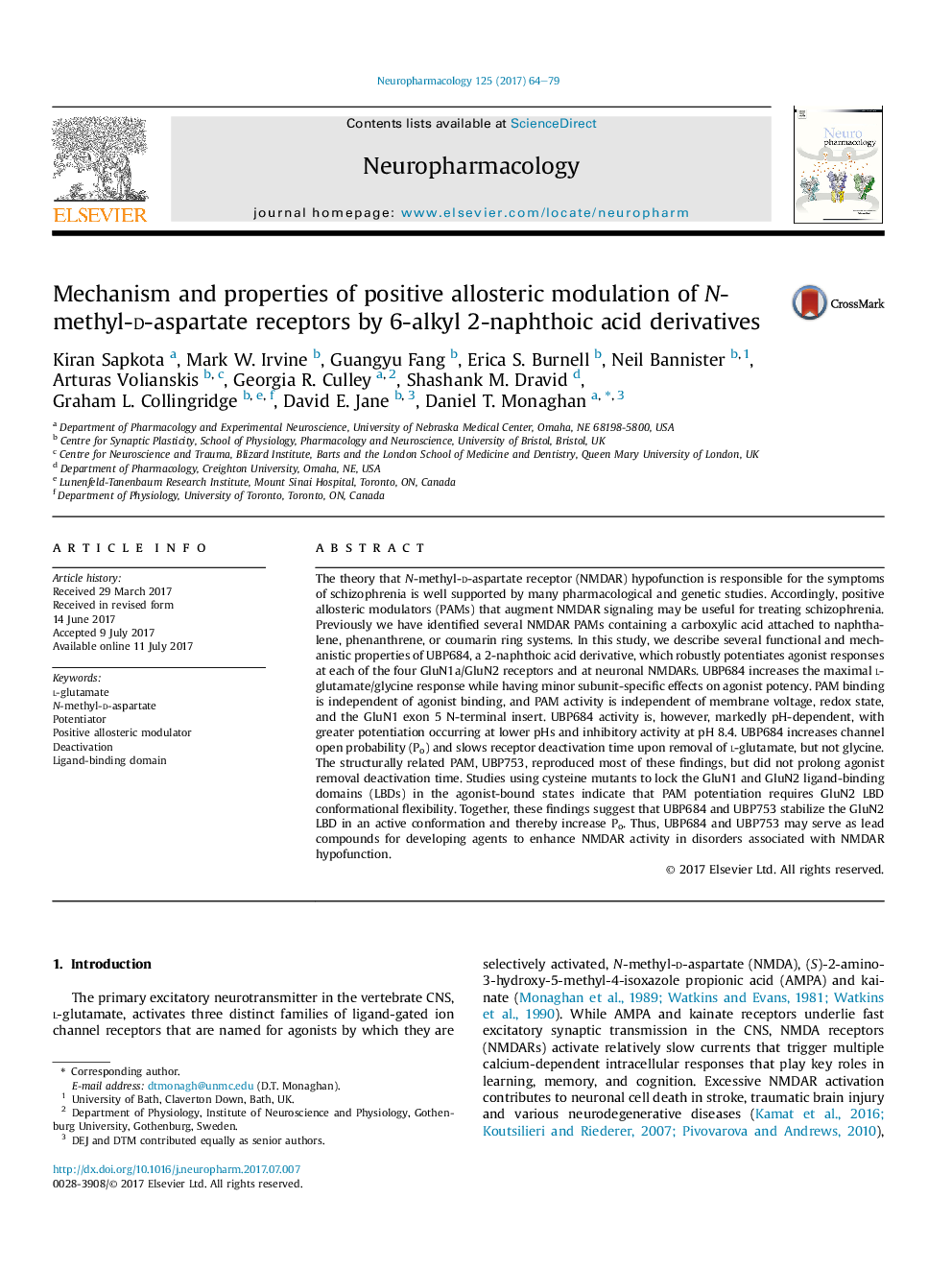| کد مقاله | کد نشریه | سال انتشار | مقاله انگلیسی | نسخه تمام متن |
|---|---|---|---|---|
| 5548803 | 1556592 | 2017 | 16 صفحه PDF | دانلود رایگان |

- UBP684 and UBP753 are use-independent pan-NMDA receptor allosteric potentiators.
- These potentiators increase maximal response and minimally change agonist potency.
- UBP684, UBP753, and GNE8324 are pH-dependent and inhibitory at pH 8.4.
- UBP684 increases channel open probability and slows receptor deactivation.
- Potentiation appears to stabilize the active form of the GluN2 ligand-binding domain.
The theory that N-methyl-d-aspartate receptor (NMDAR) hypofunction is responsible for the symptoms of schizophrenia is well supported by many pharmacological and genetic studies. Accordingly, positive allosteric modulators (PAMs) that augment NMDAR signaling may be useful for treating schizophrenia. Previously we have identified several NMDAR PAMs containing a carboxylic acid attached to naphthalene, phenanthrene, or coumarin ring systems. In this study, we describe several functional and mechanistic properties of UBP684, a 2-naphthoic acid derivative, which robustly potentiates agonist responses at each of the four GluN1a/GluN2 receptors and at neuronal NMDARs. UBP684 increases the maximal l-glutamate/glycine response while having minor subunit-specific effects on agonist potency. PAM binding is independent of agonist binding, and PAM activity is independent of membrane voltage, redox state, and the GluN1 exon 5Â N-terminal insert. UBP684 activity is, however, markedly pH-dependent, with greater potentiation occurring at lower pHs and inhibitory activity at pH 8.4. UBP684 increases channel open probability (Po) and slows receptor deactivation time upon removal of l-glutamate, but not glycine. The structurally related PAM, UBP753, reproduced most of these findings, but did not prolong agonist removal deactivation time. Studies using cysteine mutants to lock the GluN1 and GluN2 ligand-binding domains (LBDs) in the agonist-bound states indicate that PAM potentiation requires GluN2 LBD conformational flexibility. Together, these findings suggest that UBP684 and UBP753 stabilize the GluN2 LBD in an active conformation and thereby increase Po. Thus, UBP684 and UBP753 may serve as lead compounds for developing agents to enhance NMDAR activity in disorders associated with NMDAR hypofunction.
Journal: Neuropharmacology - Volume 125, October 2017, Pages 64-79